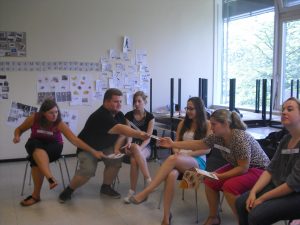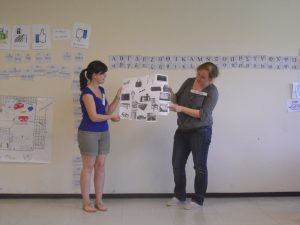The Second Language Acquisition (SLA) process presented on this page rejects the view of language teaching as an instructional practice as well as the view of teachers as distributors of knowledge. Instead, this perspective suggests that learners should be integrated actively in the learning and teaching process and that they should collaborate with the teacher to create learning opportunities. Behind this is the idea that learners need to create their 'own' language, they need to establish a connection. Language –and meaning –here is not seen as something to be mastered through the study of grammar but through interactions with others in the foreign tongue, through communication. The following suggestions illustrate what can be done in a language teaching course to create a dynamic, active, and communicative forum for language acquisition.
 Language learning is not a linear process with a beginning and an end but rather a life-long process, always emerging and not fully controllable. This is why teachers should not try to control the natural process of language acquisition but rather integrate learners and explore the world around them (e.g. through games, study trips, cooking, etc) through the medium of the foreign language.
Language learning is not a linear process with a beginning and an end but rather a life-long process, always emerging and not fully controllable. This is why teachers should not try to control the natural process of language acquisition but rather integrate learners and explore the world around them (e.g. through games, study trips, cooking, etc) through the medium of the foreign language.
This approach to SLA also aims to include both mind and body – as they are seen as a unity rather than a duality. Exercises involving the whole body are recommended, such as acting out one's feelings and gestures in the group. With exercises like this, learners improve their understanding and communicative skills on two levels: physical and mental.
 As already mentioned in the introduction above, everyday situations can help to establish a connection to a foreign language. Possible topics could be shopping, cooking meals from the culture where the language is spoken -- and enjoying the meal together! There is always the option for students to come up with additional topics they find interesting.
As already mentioned in the introduction above, everyday situations can help to establish a connection to a foreign language. Possible topics could be shopping, cooking meals from the culture where the language is spoken -- and enjoying the meal together! There is always the option for students to come up with additional topics they find interesting.
NOTE: For Videos of the FTSK Language Learning Courses visit the "Examples" sub-page.